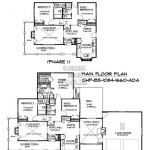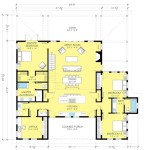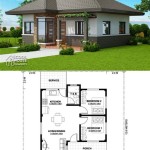How to Put Dimensions on a Floor Plan in Revit 2023
Applying dimensions to a floor plan is a crucial step in providing accurate and comprehensive documentation. Revit, a powerful BIM (Building Information Modeling) software, offers several methods for adding dimensions to floor plans, empowering users to create professional-quality drawings.
1. Linear Dimensions
Linear dimensions measure the distance between two points. To create a linear dimension, select the "Linear Dimension" tool from the "Dimensions" panel on the ribbon. Click on the start and end points of the element you want to dimension. The dimension value will appear automatically.
2. Angular Dimensions
Angular dimensions measure the angle between two lines or planes. To create an angular dimension, select the "Angular Dimension" tool from the "Dimensions" panel. Click on the first line or plane, the vertex, and the second line or plane. The dimension value will display the angle in degrees.
3. Radius and Diameter Dimensions
Radius and diameter dimensions measure the distance from the center of a circle or arc to a point on its circumference. To create a radius dimension, select the "Radius Dimension" tool from the "Dimensions" panel. Click on the center point and then the point on the circumference. For a diameter dimension, select the "Diameter Dimension" tool and click on two points on the circumference.
4. Ordinate Dimensions
Ordinate dimensions measure the distance from a reference point, typically a grid line, to a point or object on the floor plan. To create an ordinate dimension, select the "Ordinate Dimension" tool from the "Dimensions" panel. Click on the reference point and then on the point or object you want to dimension.
5. Reference Dimensions
Reference dimensions provide additional information about the size or location of an element without adding clutter to the drawing. To create a reference dimension, select the "Reference Dimension" tool from the "Dimensions" panel. Click on the element you want to dimension and then on the reference point. The dimension value will appear in parentheses.
6. Modifying Dimensions
After placing dimensions, you can modify them as needed. To change the dimension value, select the dimension and enter the new value in the Properties palette. To adjust the dimension line or arrowhead, use the grips that appear when the dimension is selected.
7. Dimension Styles
Revit allows you to create custom dimension styles to control the appearance of your dimensions. To create a new dimension style, click on the "Dimension Styles" button on the "Dimensions" panel. Adjust the settings in the "Dimension Style Manager" dialog box to customize the font, size, color, and other properties of the dimensions.
Conclusion
Adding dimensions to floor plans in Revit 2023 is essential for creating accurate and detailed drawings. By following the steps outlined in this guide, you can effectively dimension your floor plans, ensuring that your designs are clear, precise, and professional.

Revit Snippet How To Dimension Entire Walls In 1

House Design 20 Dimensions Revit Tutorial

Revit 2024 Tutorial Complete Floor Plan

Easy Ways To Set Floor Levels In Revit 5 Steps With Pictures

Full Project Ep 03 Placing Receptacles 2nd Floor Revit Electrical Tutorial

Revit 2024 Beginner Tutorial Floor Plan

Complete House Design With Detailing In Revit Architecture Tutorial 3d Detail

How To Edit Dimensions In Revit Override A Dimension Value

Revit Tutorial Block Diagram To Walls

Day 22 How To Create Site Plan In Revit
Related Posts








